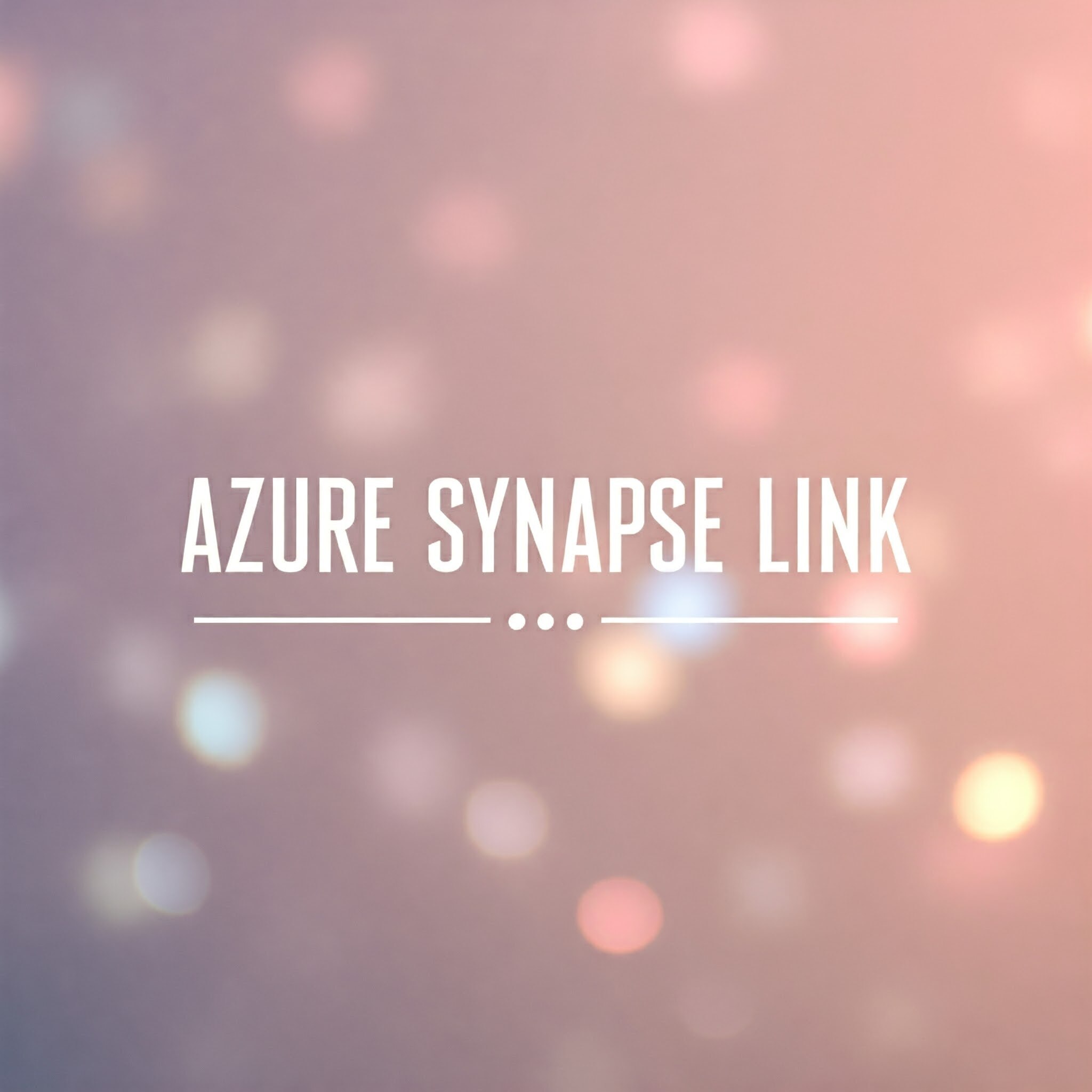Dynamics Finance & Operations – Azure Synapse, the ‘New Data Lake’

As a Dynamics ERP consumer, you will likely be aware of the Microsoft Azure Synapse Link being the new mechanism for you to access key business information from within your ERP system, especially if you have previously been working with the prior BYOD / Data Entity or Data Lake functionality for this same process.
Azure Synapse Link is part of a wider Microsoft data ecosystem that is designed to provide a far broader and more immersive data capability than has been previously plausible within the Microsoft portfolio – Potentially allowing businesses to bridge their real-time operational databases with powerful analytics capabilities when the full power of this data stack is utilised.
But what this means for you as a Dynamics ERP user can differ quite dramatically, depending on your data needs and strategy.
To give some context, the database that sits behind the Dynamics platform is not accessible in the same way as a legacy system database would have been – Rightly so as Microsoft are providing the platform on a SaaS basis and must rightly safeguard the system from any outside influence that could impact it – However, access to data is still paramount for users of these systems, so from their inception there have been mechanisms in place to expose the underlying database in one way or another.
This started with ‘data entities’ which were pre-defined data extracts for functional business areas such as ‘Sales’ wherein the data provision would be a view of selected tables that would be materialised into a secondary database – This solution was somewhat narrow in its content without development work to extend the data entity content and was quite rapidly deprecated in favour of the original ‘Data Lake’
We say original, as Azure Synapse link still utilises a Data Lake, but more on that shortly….
The original version of the Dynamics related data lake offered a more robust and comprehensive solution to extracting data from Dynamics into an accessible state, taking an incremental feed of data on an automated basis into structured files within a dedicated file storage structure and then extracting this data into a table-based format for interrogation within the Data Lake itself.
However, as with the data entities, this solution wasn’t to be the final data platform, and it was announced that it would be deprecated as of November 2024 with a full shut down in March 2025!
The good news is that Azure synapse link is taking over from the prior solutions and will provide a much more structured and efficient mechanism for obtaining data from your Dynamics system, as well as opening the door to the wider data ecosystem that Microsoft has created.
Microsoft positioning of Azure Synapse link, as well as why this may not fit with your own data strategy, is discussed below…….
Synapse link – The basics: -
Bridging Real-Time Operational Database Services with Analytics
Azure Synapse Link is a transformative feature within the Azure ecosystem that allows businesses to bridge their real-time operational databases with powerful analytics capabilities.
This service ensures that data from operational databases like Azure Cosmos DB and Azure SQL Database (as well as Dynamics ERP) can potentially be analysed in real-time without the need for complex ETL (Extract, Transform, Load) processes as data moves from the source system through Synapse link into the Data /Delta Lake and onto front end visualisation and modelling tools within Power BI.
In very simple terms, Synapse link is a highly performant data movement function that aims to populate your Data Lake in the most efficient manner possible, for the Data Lake itself to then take over the governance and security aspects of the data journey, all from within the same data stack.
Understanding the Role of Data Lakes in Modern Data Architecture
Data lakes have become an integral part of modern data architecture, offering a scalable and flexible solution for storing vast amounts of structured and unstructured data. Unlike traditional data warehouses, data lakes allow businesses to store raw data in its native format, making it easier to perform advanced analytics and machine learning tasks.
In the context of Azure Synapse Link, data lakes act as a repository where the real-time data can be ingested, stored, and analysed. This combination provides a comprehensive data platform that supports both operational and analytical workloads, ensuring that businesses can derive maximum value from their data assets.
Integrating Azure Synapse Link with Your Data Lake: A Step-by-Step Approach
Integrating Azure Synapse Link with your data lake is a straightforward process that can significantly enhance your data analytics capabilities. Here’s how you can do it:
- Set up Azure Synapse Analytics Workspace: Begin by creating an Azure Synapse Analytics workspace in your Azure portal.
- Enable Synapse Link on Operational Databases: Enable Synapse Link on your operational databases like Azure Cosmos DB or Azure SQL Database.
- Connect to Your Data Lake: Establish a connection between your Synapse workspace and your data lake (Azure Data Lake Storage).
- Configure Data Movement: Set up data movement using Synapse pipelines to ensure that real-time data from your operational databases is continuously ingested into your data lake.
- Perform Analytics: Use Synapse Studio to run queries, perform analytics, and visualize data stored in your data lake.
Best Practices for Managing and Securing Your Data with Azure Synapse Link and Data Lakes
Effective data management and security are critical when working with Azure Synapse Link and data lakes. Here are some best practices to consider:
- Implement Data Governance: Ensure that you have robust data governance policies in place to manage data quality, lineage, and compliance.
- Secure Data Access: Use Azure Active Directory (AAD) to control access to your data and ensure that only authorized users can access sensitive information.
- Monitor Data Activities: Utilize Azure Monitor and Azure Security Center to keep track of data activities and detect any anomalies or security breaches.
- Optimise Performance: Regularly optimize your data lake storage and Synapse workloads to improve performance and reduce costs.
Future Trends in Data Management: How Azure Synapse Link is Shaping the Landscape
The integration of Azure Synapse Link with data lakes is just the beginning of a new era in data management. As businesses continue to generate and rely on vast amounts of data, the need for real-time analytics and seamless data integration will only grow.
Future trends in data management are likely to include enhanced machine learning capabilities, more sophisticated data governance tools, and greater emphasis on data security. Azure Synapse Link is at the forefront of these trends, providing businesses with the tools they need to stay competitive in a data-driven world.
Synapse Link and your data strategy: -
As mentioned in the opening of this blog, Azure Synapse link may not fully cover your own data strategy or needs, depending on a multitude of factors of course, however the most common scenario that we encounter, and one that impacts our own data warehouse solution, is the need to stray outside of the overall ecosystem.
This doesn’t mean that the Azure Synapse link component itself isn’t relevant, far from it, as it will be required for you to obtain data from your Dynamics ERP database regardless, however its what you want to do with data downstream that may change things……
To explain – Once data has passed through Synapse Link and into the Data Lake repository, should you wish to work in the confines of the full Microsoft stack, modelling data in Power BI directly, or using the other tools that form part of the overall eco system, then all is well – However, if you need to take this data outside of the Data Lake, perhaps to an existing Data Warehouse in your organisation, or into other data tools that you wish to use, then you may find yourself frustrated at the level of complexity involved in doing so!
Our core Data Warehouse product for Dynamics relies upon a complete and accessible database source for us to process our ETL function, as would likely be the case if you have your own Data Warehouse, so we have created a solution that allows extraction of data from the Azure Synapse link Data Lake (in a few different ways) into a SQL Server repository of your choice – Be it Azure SQL database, VM, or even into an On Premise SQL server!
This solution ensures that you have all of the resilience and structure offered by Azure Synapse link functionality, whilst providing a complete replicated version of any data you need into your chosen destination for you to do with as you please – All whilst ensuring there is no danger of corruption to the source data or Synapse link functionality.
So, whilst we are strong advocates of the latest full MS data stack, we do know that there is never a true case of ‘one size fits all’, so where there is a need to go slightly out of the box, we can help with anything from our Dynamics ‘Reveal’ connector to a complete Intelligent data warehouse solution!


 This month, we are thrilled to highlight the incredible success story of 'Traditional Medicinals' and how they leveraged the powerful capabilities of Power BI to revolutionise their data-driven decision-making process. By implementing Power BI, 'Traditional Medicinals' experienced a remarkable transformation in their ability to gain valuable insights and visualize crucial information.
This month, we are thrilled to highlight the incredible success story of 'Traditional Medicinals' and how they leveraged the powerful capabilities of Power BI to revolutionise their data-driven decision-making process. By implementing Power BI, 'Traditional Medicinals' experienced a remarkable transformation in their ability to gain valuable insights and visualize crucial information.